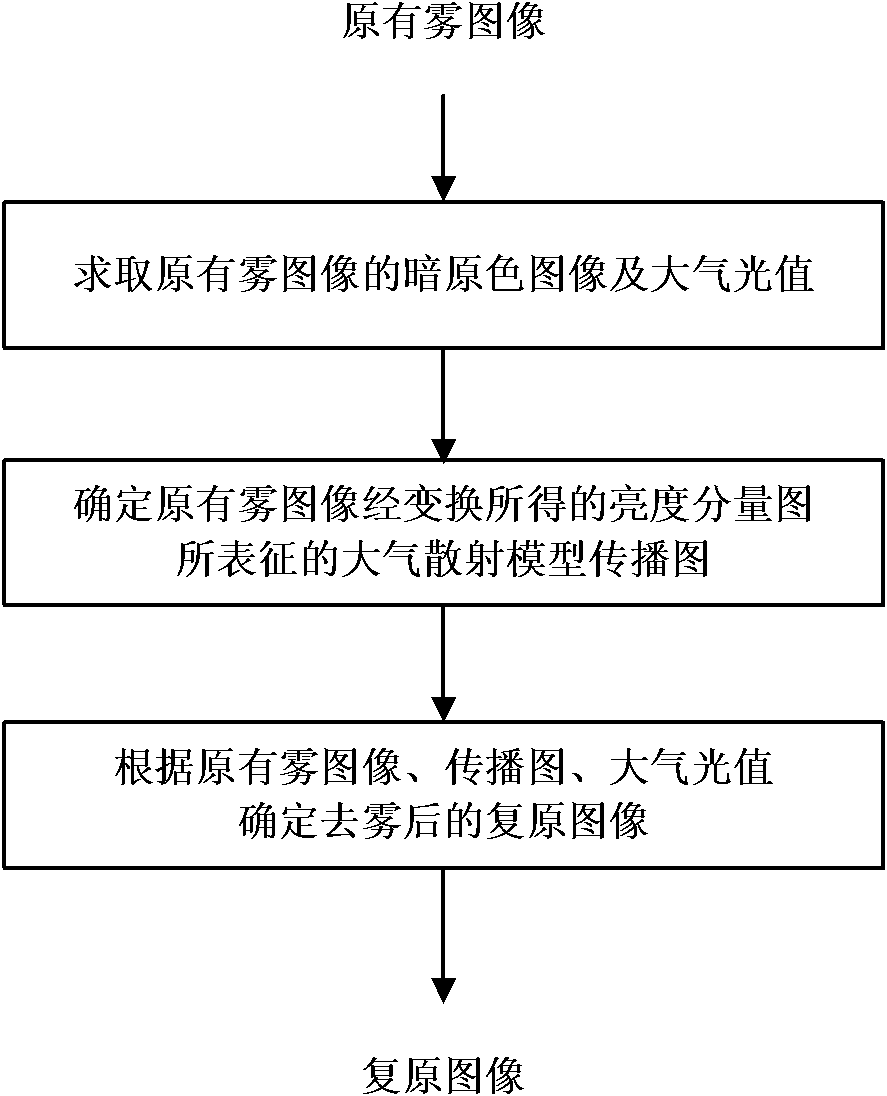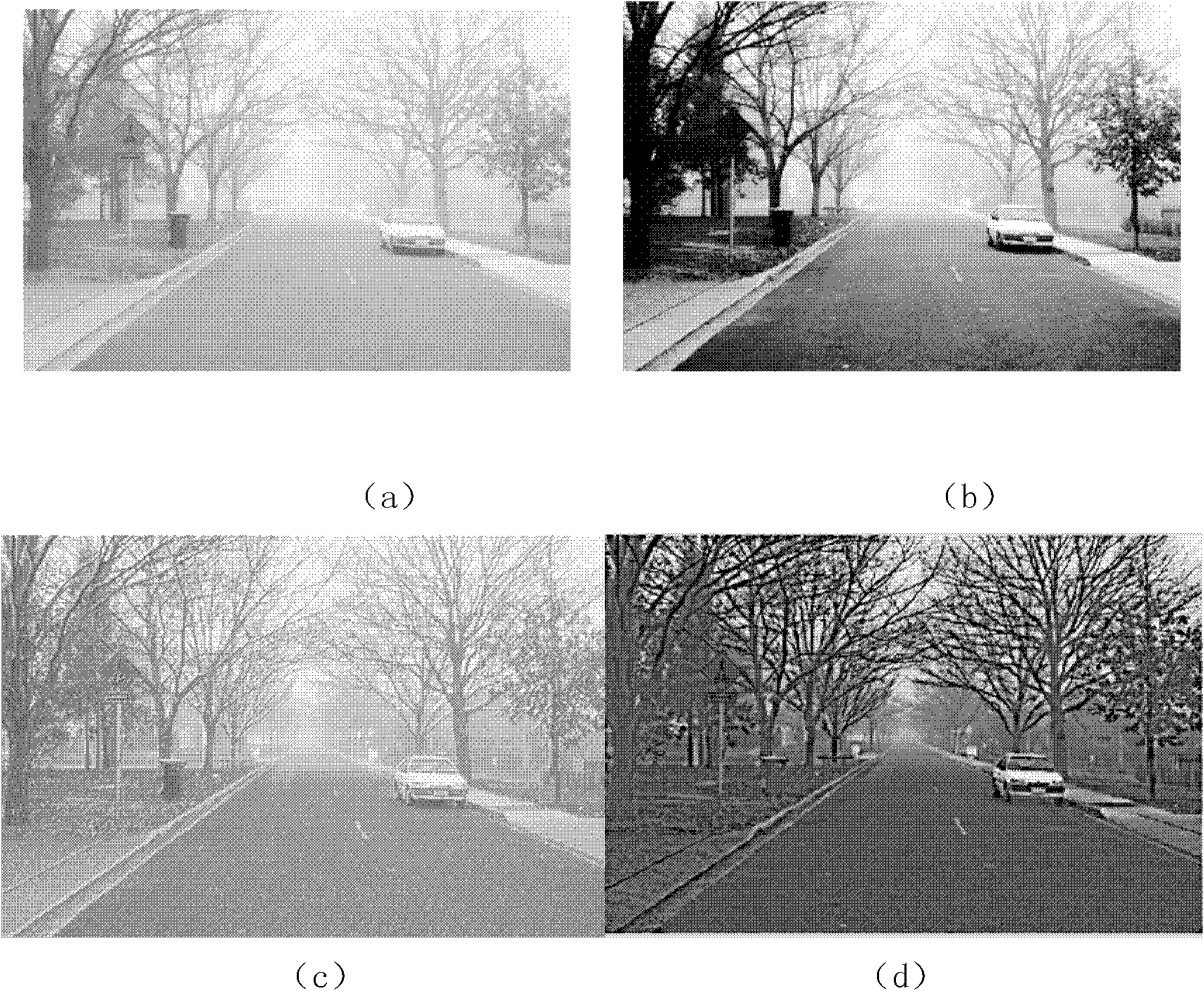Automatic image defogging method based on dark primary colour
An automatic image, dark primary color technology, applied in image enhancement, image data processing, instruments, etc., can solve the problems of high computational cost, manual adjustment, and difficulty in meeting the needs of real-time image processing in changing scenes.
- Summary
- Abstract
- Description
- Claims
- Application Information
AI Technical Summary
Problems solved by technology
Method used
Image
Examples
Embodiment 1
[0064] This embodiment is for grayscale images, according to figure 1 As shown, the defogging process is carried out in the following three steps:
[0065] 1. Obtain the dark primary color image and atmospheric light value of the original fog grayscale image
[0066] The value of each pixel of the dark primary color image of the grayscale image is determined by the following expression:
[0067] J dark ( x , y ) = min ( x ′ , y ′ ) ∈ Ω ( x , y ) ( J ( x ′ ...
Embodiment 2
[0088] for color images Image 6(a) (size is 204*209) for defogging treatment. will first Image 6 (a) On the three color channels of R, G, and B, a template with a size of 7*7 is used for minimum value filtering, and the minimum value of the corresponding pixel points of the three images obtained after filtering is used as the pixel of the corresponding point of the dark primary color image value, get Image 6 The dark channel image of (a) such as Figure 7 shown. And through this dark primary color image to obtain Image 6 The value of atmospheric light A in (a) is 206.
[0089] Then, convert the original fog image to YCbCr color space, extract its brightness component image, perform Retinex transformation on the brightness image according to formula (2), and then carry out inverse color transformation according to formula (3), where the value range of C is 1 to 1.4, and the value in this embodiment is 1.08. Then, the transformed image is subjected to a median filter ...
Embodiment 3
[0092] for color images Figure 9 (a) (size is 835*557) for defogging treatment. will first Figure 9 (a) On the three color channels of R, G, and B, respectively use a template with a size of 21*21 to perform minimum value filtering, and use the minimum value of the corresponding pixel points of the three images obtained after filtering as the pixel of the corresponding point of the dark primary color image value, get Figure 9 The dark channel image of (a) such as Figure 10 shown. And through this dark primary color image to obtain Figure 9 The value of atmospheric light A in (a) is 224.
[0093] Then, convert the original fog image to YCbCr color space, extract its brightness component image, perform Retinex transformation on the brightness image according to formula (2), and then carry out inverse color transformation according to formula (3), where the value range of C is 1 to 1.4, and the value in this embodiment is 1.08. Then, the transformed image is subjected...
PUM
 Login to View More
Login to View More Abstract
Description
Claims
Application Information
 Login to View More
Login to View More - R&D
- Intellectual Property
- Life Sciences
- Materials
- Tech Scout
- Unparalleled Data Quality
- Higher Quality Content
- 60% Fewer Hallucinations
Browse by: Latest US Patents, China's latest patents, Technical Efficacy Thesaurus, Application Domain, Technology Topic, Popular Technical Reports.
© 2025 PatSnap. All rights reserved.Legal|Privacy policy|Modern Slavery Act Transparency Statement|Sitemap|About US| Contact US: help@patsnap.com



